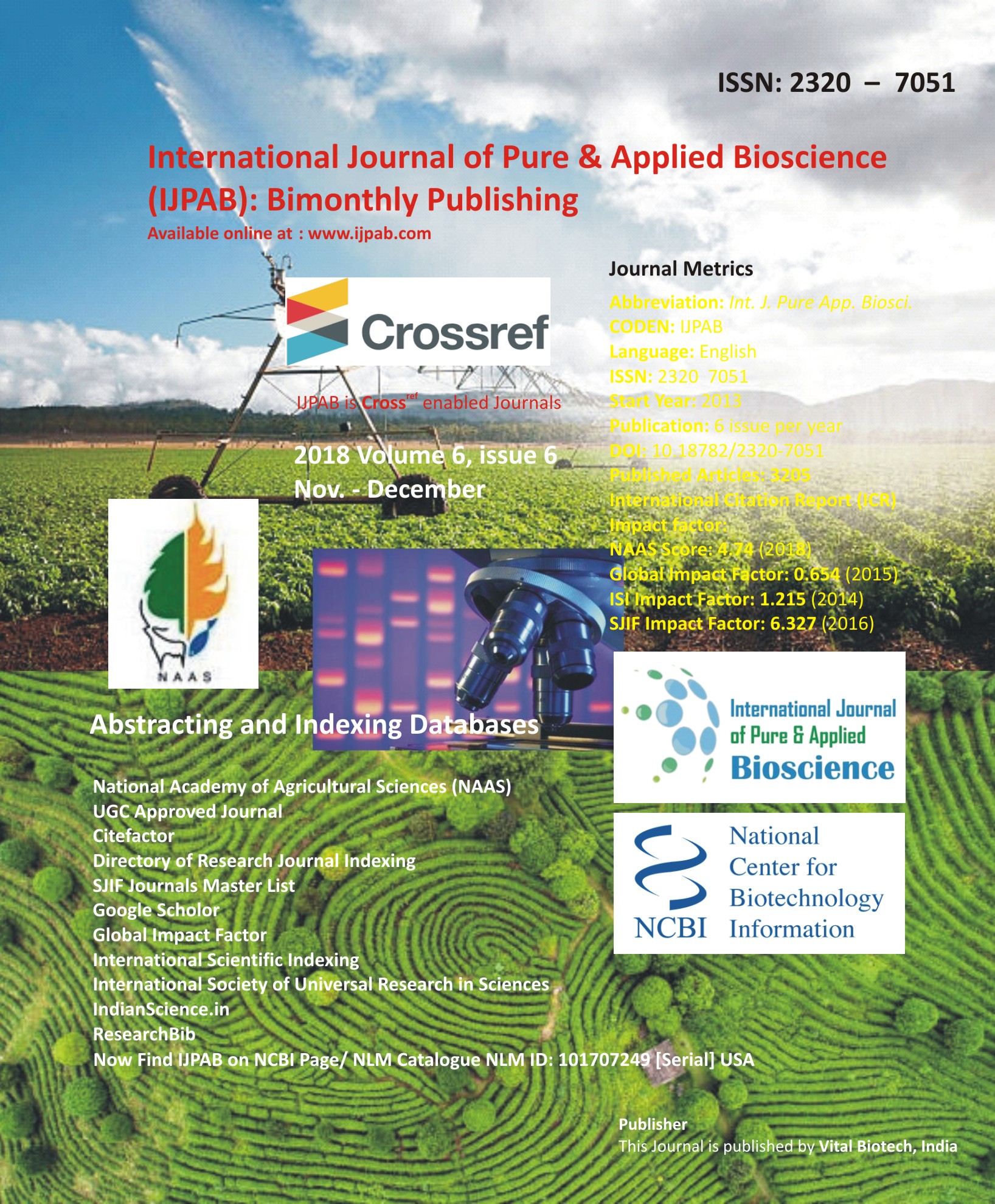
-
No. 772, Basant Vihar, Kota
Rajasthan-324009 India
-
Call Us On
+91 9784677044
-
Mail Us @
editor@ijpab.com
International Journal of Pure & Applied Bioscience (IJPAB)
Year : 2018, Volume : 6, Issue : 6
First page : (1298) Last page : (1303)
Article doi: : http://dx.doi.org/10.18782/2320-7051.7129
Comparative Approach of Wheat (I.E. Aestivum Group, Durum Group and Synthetic Wheat Group) with Triticale Genotypes for
Nutreint Uptake and Use Efficiency
Akshay Kumar Vats*, S. S. Dhanda and R. K. Behl
Department of Genetics and Plant Breeding,
Chaudhary Charan Singh Haryana Agricultural University Hisar - 125004
*Corresponding Author E-mail: akshayvts@gmail.com
Received: 10.11.2018 | Revised: 14.12.2018 | Accepted: 20.12.2018
ABSTRACT
The objectives of present investigation were to study the genotypes of wheat (T. aestivum, T. durum, synthetics and triticale) for various characters under low and optimum input conditions, to determine the genotypic and phenotypic variability and indices of yield and its components for nutrient uptake and use efficiency. Results revealed that the mean squares due to genotypes were significant for all the characters except for spikelets per spike. Genotype × fertilizer (G × F) interaction was significant for majority of the characters in T. aestivum, T. durum, triticale and synthetics. Correlation coefficients revealed that the genotypes having high grain yield also had more tillers per plant, high 100–grain weight, lower plant height and high harvest index under both optimum and low input conditions. But the correlations of grain yield with grains per spike and biological yield were not similar under both conditions, the grains per spike was important component of grain yield under optimum input conditions, while biological yield under low input conditions. This may be due to the fact that some genotypes adaptable to low input conditions might have more responded fertilizer dose by increasing the vegetative phase and decreasing the productive phase under optimum input conditions leading to non-significant correlations with biological yield. With regard to their comparative response for nitrogen use efficiency from low to optimum input conditions, T. durum had the highest mean response followed by triticale then synthetic wheat and T. aestivum. With regard to phosphorous use efficiency, percentage of response from low input to optimum input conditions. T. aestivum had the highest response followed by synthetic wheat, triticale and T. durum. With regard to response of zinc from low to optimum input conditions, T. aestivum had the highest response followed by synthetic wheat, triticale and durum. The T. aestivum group in general had better response followed by synthetics, triticale and durum groups for Nitrogen, phosphorous and Zinc use efficiencies, which may probably be due to high selection pressure on T. aestivum and T. durum for fertilizer responsiveness.
Key words: T. aestivum, Fertilizer, Genotype, Biological yield
Full Text : PDF; Journal doi : http://dx.doi.org/10.18782
Cite this article: Vats, A.K., Dhanda, S.S. and Behl, R.K., Comparative Approach of Wheat (I.E. Aestivum Group, Durum Group and Synthetic Wheat Group) with Triticale Genotypes for Nutreint Uptake and Use Efficiency, Int. J. Pure App. Biosci.6(6): 1298-1303 (2018). doi: http://dx.doi.org/10.18782/2320-7051.7129

